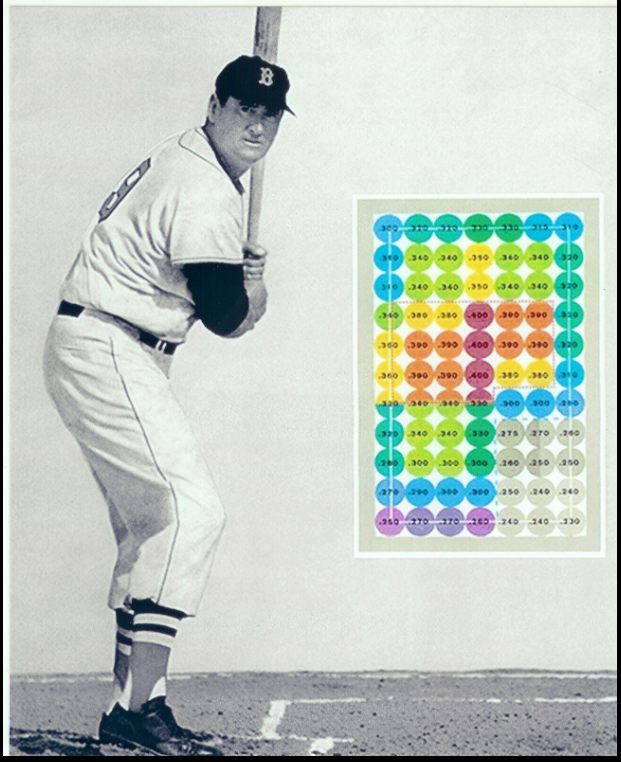
I love baseball! I love the Dodgers!
I’m sitting here on the day before Father’s day, pondering why it is that I love the game of baseball so much. I hope to share about different aspects of my love for this great game over the next several months, but first and foremost, I have to say, that I love baseball because of the great joy I have had being able to experience baseball from the perspective of a father. It started within a few months of the birth of my firstborn son, when I handed Eric a squishy ball to grab. Watching his eyes and facial expression light up with excitement sent me over the moon. That simple act soon advanced to rolling a ball to him, then on to playing catch, teaching him how to throw, hold a bat and swing at a pitched wiffle ball. As he grew older and as my second son, Joel, joined in the fun, we started to up the ante and I began to pitch to them in our side yard. They broke more bedroom windows in our house than I could shake a stick at. But their joy in hitting a ball over the house (our version of a homerun) made it all worth it (although my wife might disagree). Those simple beginnings led to the opportunity to coach both of them in youth ball, then through high school, and ultimately to watching them play at the college level. I can tell you there has been no Dodger highlight, no World Series victory, no personal achievement or personal highlight that compares to those days I was able to be with Eric and Joel, ball in glove and bat in hand. Many of my happiest memories are of those times. That’s what I love most about baseball! It’s a game that can be enjoyed between father and son and father and daughter. That, however, is a story for another day.
There are so many secondary reasons why I love baseball. I will be writing about those reasons over the next few months. Today, however, I want to focus on one aspect of my love of baseball. One of the reasons, I love baseball is because it’s hard to play and be really good at it! In fact, I’m convinced that baseball is the hardest sport at which to excel. Convince me otherwise. In particular, like Ted Williams and others, I believe that hitting a baseball is the hardest thing to do in sports. Today I will consider why that is.
Initially, lets just consider the fact that baseball is hard because so few excel at it.
Baseball has the most paid athletes out of all sports(when add in the minor leagues). Yet, it has the has the lowest odds becoming a professional player. Only 1% of all high school baseball players will ever play college baseball. Only 1% of college players, ever make it to the minor leagues. Of those who play minor league baseball, only 1% will ever make it to the major leagues. To finish it off, only 1% of all major leaguers will ever get selected to the Hall of Fame. Those are insane numbers! You have a better chance of winning the lottery 3 times before making it to the Major Leagues. At these odds, you’re talking about some seriously gifted athletes. Now, let’s look at just one part of baseball: hitting.
Hitting a baseball is very, very hard.
As many frustrated Dodger fans will tell you, all you have to do is watch Max Muncy, JT, and Bellinger flail away at pitch after pitch to know that hitting a baseball is hard. Through their efforts they are doing their absolute best to make it look ridiculously hard.
But, then there is Ted Williams, one of the greatest hitters to ever play Major League Baseball, finished his 19-year career playing for the Boston Red Sox with a .344 batting average. That’s a 34 percent success rate, tied for seventh best in the sport’s history!! That means he failed at his assigned task, 66% of the time! It’s no wonder that Williams said that “hitting a baseball is the hardest thing to do in sports.” Hitting is the only thing in sports where you can fail 70% of the time and still be considered one of the greatest to ever play the game.
That begs the question. Why is hitting a baseball so difficult?
For one, the physics of hitting are virtually impossible for me to get my mind around. The velocity of the average fastball in the Major Leagues is more than 90 miles per hour. Paul Recer, in an article for the Cape Cod Times, wrote:
“A batter facing a 90 mph fastball has less than a quarter second to see the pitch, judge its speed and location, decide what to do, then start to swing.” To add to this already difficult situation, Recer added. “To make contact, the bat must meet the ball within an eighth of an inch of dead center and at precisely the right millisecond as the 3-inch spinning sphere whizzes by.”
The pitcher’s mound is 60′ 6″ from home plate. When the pitcher releases the ball, he is usually less than 60 feet away from the hitter. A 90 mph fastball goes from release to across the plate in less than 0.44 seconds. The ball travels 12 feet before a hitter is even able to pick it up. Then the ball travels another 10 feet before the hitter calculates speed, spin and trajectory. To add to their woes, for the last 10 feet of its journey toward the catcher’s mitt, the baseball is effectively invisible to the hitter. In the average pitch, a hitter has about 150 milliseconds to decide whether he wants to swing. I’m not good at knowing how quick a 150 millisecond is, but I’ve read that it is literally the blink of an eye. To add perspective, in the time it took you to read this paragraph, several pitches could have been thrown. Let’s put this in perspective as to how difficult this is. Think about driving your car 100 mph on the freeway. Everything passes by you like a blur. It’s hard to make out the objects you are passing because you are moving so fast. This is what the baseball looks like to a hitter. Once a baseball hits about 80mph it starts to look more like a blur to the human eye as opposed to a baseball. Most major league pitchers throw a fastball around 95mph. When a ball travels that quickly you literally see the equivalent of next to nothing.
And even though a hitter has that glorious 150 milliseconds to decide whether to swing, the ball is only in the hitting zone for less than 10 milliseconds, according to David Kagan, a physics professor at California State University, Chico, and the self-proclaimed “Einstein of the National Pastime.” As someone pointed out, the amount of time the ball is in a spot where a batter can make contact and keep it in fair territory equates to the time separating a photo finish at the Kentucky Derby. As Yogi Berra so eloquently put it: “You can’t think and hit at the same time.” He may have been on to something, you don’t have time to think while hitting.
Thomas Kaminski, the director of athletic training education at the University of Delaware, compares trying to hit a baseball to trying to catch a peanut in your mouth from someone 100 feet away. Although even then, he says, it would be much easier for the individual to get in a good position to catch the peanut. Hitting a baseball is “truly a marvel if you think about it,” he says. I have actually tried, on more than on occasion(when you’re young you do all kinds of crazy stuff), to catch a peanut in my mouth thrown at me from less than a 100 feet. I failed miserably.
If the speed of the pitched baseball wasn’t enough, there’s more to consider. The freaking ball also moves! If it was speed alone, Brusdar Graterol is on his way to the Hall of Fame. Moreover, if it was speed alone, Tyler Anderson, and pitchers like him, wouldn’t be 8-0. So rather than just rear back and throw as hard as they can, pitchers are also doing their utmost to deceive the batter. On the way to home plate the ball drops at an average of 1.3 inches. However, sometimes the ball will rise, or drop, or curve, or slide, or spin. So in the 150 milliseconds a hitter has to decide to swing, he must also figure out what type of pitch it is and where it is going to end up. All the while he is making this mental calculation, the ball is dipping and doodling on its way to home plate. Paul Sajda, an engineering professor at Columbia University, studies the neural processes involved in rapid decision making. He compared trying to hit a baseball with trying to hit a bullet with another bullet. “You’re trying to hit something that’s moving super-fast with something else that’s moving super-fast,” Sajda says. I know it’s been done, but it is oh so rare for two very experienced sharp shooters to hit a bullet with another bullet, evening when they’re trying.
Now if that wasn’t enough to make hitting hard, a batter is attempting to hit this 95 mph fastball with a bat that’s 2.6 inches wide. Easy enough you say. But, a typical bat has a “sweet spot” that’s roughly one-fifth of an inch in diameter. If the ball hits that spot at precisely the right time, the hitter will be doing a bat flip and floating around the bases listening to the roar of the crowd as the ball sails out of the yard for a homerun. However, if he makes contact just slightly outside the “sweet spot” or a moment to late or early, then he’ll hit nothing more than a foul ball or a ground ball back to the pitcher. As someone pointed out, the margin of error for where the batter can make contact with the ball and hope to get a hit is half the width of the SIM-card in your iPhone. As Trevor May pointed out,
“Most of all, the hardest thing to do is gauge movement—it’s almost impossible to do it,” he said. “People who watch the game can’t really see what a ball looks like coming into a hitter. They expect their best hitter on the team to get a hit every time, or at least hit the ball hard. But some [pitchers] just have some of the craziest movement you’ve ever seen.”
Paul Sajda also hypothesized that successful hitters have to be exceptional in two areas: First, hitting a baseball is not about how fast a batter can swing, but rather how fast they can stop themselves from swinging at pitches they aren’t likely to get hits on—preventing more strikeouts and creating more opportunities to get a hit. The ability to determine in 150 milliseconds whether to swing matters more than the batter just being able to swing quickly. The second important area is a hitter’s ability to identify pitches, Sajda says. To an ordinary person, determining the difference between a fastball and a curveball is like determining the difference between the faces of two strangers in 150 milliseconds. They have no associations with that person, and it takes longer to process their facial expressions. For a baseball player, identifying the two pitches is like distinguishing between the faces of two family members—even in 150 milliseconds, it’s easy to identify the differences between your brother and sister because your brain is familiar with them.
Hitting a baseball is hard. I have never faced a 95 mph fastball, or a Kershaw curve, or a Gonsolin change-up. As much as I think I would be up for the challenge, I truly wouldn’t be. Nor would you. No matter how good you think you were in your youth, or how many times you sing “Glory Days” to yourself, you can’t do what these players do. The incredible hand-eye coordination and balance it takes to hit a baseball is found in very few people. Despite the fact that many train intensely, take all manner of special courses and spend hours upon hours in the cage, many still aren’t cut out to be MLB-caliber hitters. Why? Because hitting a baseball is very, very hard!!
Over the next few months, I’ll also look at other aspects of baseball that are hard, such as pitching and the mental grind of a 162 game season. I’ll also look at what makes this such a beautiful game.
These articles won’t be written consecutively, as I’ve got some other articles brewing as well. I just need to find the time.
Happy Father’s Day to all those who have had the joy of being fathers!!













Good read. Thanks Rob.
I see Chico mentioned. My Alma Mater. I took those classes Kagan teaches. But he wasn’t teaching them. He was maybe in diapers then.
Interesting picture up there. The top 4 lines of balls are no longer strikes. Should be much easier to zone in on your sweet zone. It isn’t. I saw Muncy chase at least 4 again.
Yes, it’s hard to hit a baseball. Made harder by some.
I woke up to the headline Mookie to the IL. Cracked rib. I had one of those once. Hurt like the dickens. For weeks.
I love baseball too. Maybe I loved it more when Kagan was in diapers.
Chico: my daughter’s Alma Mater as well. She and her family still live there.
As do both of my kids and all my grandchildren. It’s a much different place now that was in the mid/late 70’s.
This article reminds me, all too painfully, of how I flailed away at good curve balls all through high school.
I was lucky. For two reasons. When was11 I had a teacher who understood spin recognition, something NOBODY but him was talking about. I also was blessed with excellent vision, measured at 20/10 by the Marine Corps 7 years later. I just wasn’t often fooled by balls spinning out of the strike zone. Granted, nobody was spinning it as tight as ML pitching does but early pitch recognition is crucial at all levels
Betts to IL with cracked rib. McKinstry to be called up. Another injury sidelines another star and an already struggling inconsistent offense gets a lot weaker. Thank goodness the pitching has been solid.
I know the script that was laid out was that the offense was the equivalent of the 1927 NYY team, and that the Dodgers needed help in starting pitching with all of the injuries. Sometimes it is easier to continue with the script. Many have called for more starting pitching (me included). But with the return of Heaney today, the starting pitching has five ML pitchers again, and the Dodgers now have another weapon in waiting…Mitch White. Ryan Pepiot is a solid emergency starter this year.
Danny Duffy will be back soon. Blake Treinen should be back around the All Star Break. Reyes Moronta looked like the old SFG reliever yesterday.
But can you really count on Tony Gonsolin and Tyler Anderson continuing as they have? There is about 6 weeks to the deadline, so no organization is really thinking trade right now. But I cannot see a scenario where anyone better than Frankie Montas or Luis Castillo will be available, and I am not sure that AF will overspend on either one. Maybe he would consider taking a flyer on Martín Pérez, but not with any of the top prospects. If a top pitcher (starting or relief) plops in their laps, that would be fantastic, but not something I would count on.
I have now shifted my cart to a top shelf DH, again if one is available. I am just not confident that JT or Max can correct what ails them this year. I also do not think that it serves the team well to have Will Smith in the 3-4-5 spot in the lineup. He is adequate in the 3-4-5 spot, and he needs to stay there out of necessity, but he really is a very good #6.
#3 – .232/.323/.464/.787
#4 – .246/.352/.488/.840
#5 – .256/.353/.428/.781
#6 – .278/.374/.562/.937
If the choice is Smith or Max/JT in the #4 slot, that is an easy decision. But maybe there is a better option out there. There are six weeks to try to see if the better option is internal or if AF needs to go out and find someone.
“But can you really count on Tony Gonsolin and Tyler Anderson continuing as they have?”
I don’t. Not without a break, or two, between now and October. Thus my feeling about a trade. I don’t believe we want pennant pressure on rookie pitchers.
Duffy? Sure. Ok.
I don’t it matters who hits where in the middle of the lineup if all the names remain the same. Pull those names out of a hat, or have the computer call it based on data and probabilities. Between now and the deadline I might put Muncy on a 30 Day PX Program and give Zach, Jake and Vargas some at bats. I guess I just leave Bellinger where he is and hope for the best. If he needs rest, ZJV plan is employed.
I know some read the MiLB Summaries (and others do not), but I thought I would include a couple of outstanding efforts last night that perhaps just might pique the interests of some.
Mitch White was absolutely brilliant. I do not know how many people have actually visited the Reno Greater Nevada Field, and while it is a great venue, it is also a launching pad. 6.0 scoreless innings on 3 hits. He did not issue any walks, but recorded 4 Ks. He threw 79 pitches (58 strikes). He has absolutely nothing left to prove in MiLB.
Jake Lamb – Hit two more HR’s last night. He now has 14 (4th in PCL). He has 45 RBIs (5th in PCL). His batting line is .298/.408/.553/.961. That is 12th, 6th, 7th, and 5th in PCL respectively.
Jason Martin – Hit his 10th HR last night. He is now batting .295/.389/.570/.959. That is 15th, 12th, 5th, and 6th in the PCL respectively. Triples – 5 (1st), Doubles – 13 (8th), and HRs – 10 (18th).
Gavin Stone – Got back to his dominating self. He pitched 5.0 scoreless innings. He threw 91 pitches (56 strikes). He gave up 3 hits and 2 walks, but he also recorded 11 K’s. That is 5.5 SO/W ratio. His Tulsa ERA is now 1.45 and WHIP 1.10 in 31.0 AA innings. He has not yielded a HR in AA. Overall in AA, 51 K and 7 BB. He is 23 and dominating at AA.
We’ve got another brutal schedule leading up to the ASG, with what could be hot humid games in Cincinnati and Atlanta, then 3 more in St Louis mid July. Maybe we allow a couple of the young guns to sweat out 4-5 innings and give a few of the regular starters some easy hours sitting by a fan.
Here are a couple of twitter videos on Dustin May throwing from the mound yesterday.
Dustin’s Comments on his Mound session:
Doc’s Comments
https://twitter.com/DodgersViews/status/1538290464293539840?s=20&t=ONCnoaU3UmPIHGPbrh7ORA
I thought it was very interesting how flummoxed Doc seemed to get when asked what his thoughts were about no sac flies since May 28. Austin Barnes ended that streak last night, but he really did not know what to say before the game on that topic. You could see the gears in his head turning on trying to find the right way to spin it.
About 30 percent of the population has 20/15 vision or better. I wonder what the percentage is for MLB players?
What’s the over/under on umpires’ vision, especially when they are behind the plate?
Bye Eddy. Better luck next time.
Zach’s turn.
I have no problem with that. He’s certainly paid his dues.
Isn’t Doc the guy who’s always talking about putting his players in a position to succeed? Yeah, right.
Eddy can hit and we’re adding a position player while subtracting a pitcher tomorrow. I’m not all that certain it’s going to be Bye Bye Eddy quite that quickly.